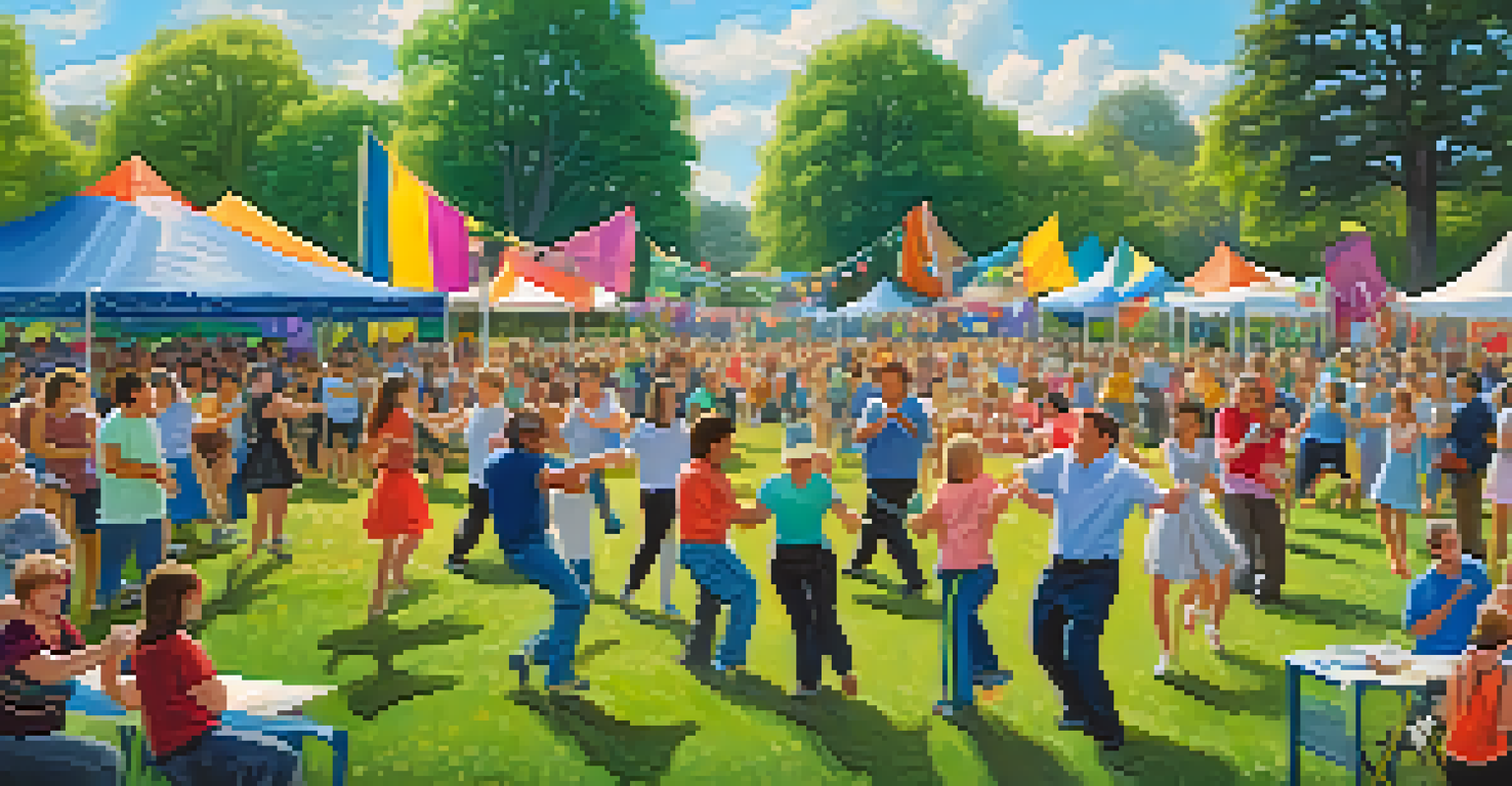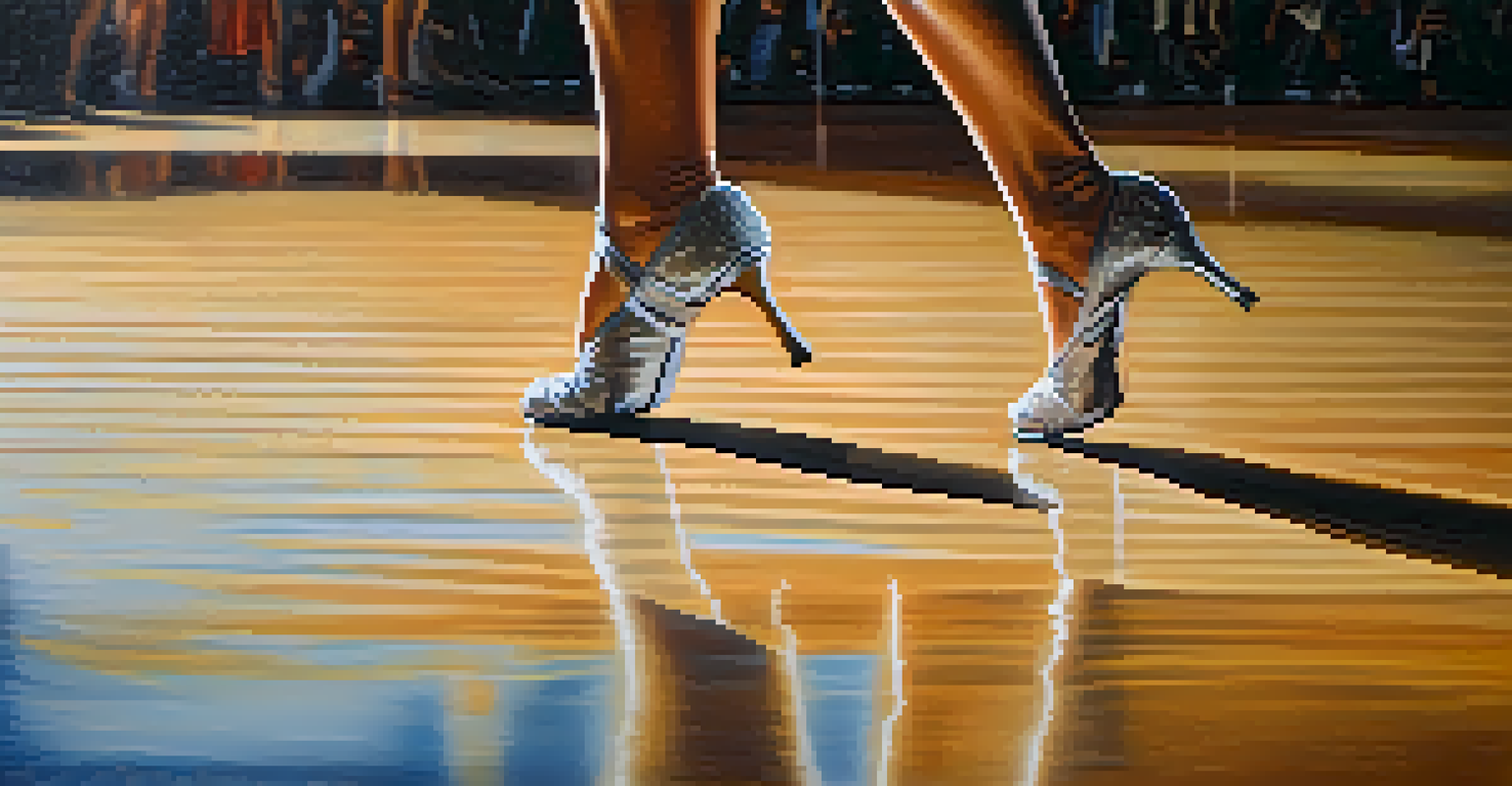The Benefits of Dance for Individuals with Disabilities

Dance as a Form of Expression and Communication
Dance offers a unique channel for individuals with disabilities to express themselves. When words may fail, movement can convey emotions and stories in a way that resonates deeply. This form of non-verbal communication can be especially liberating for those who struggle with traditional methods of expression.
Dance is the hidden language of the soul.
For many, the rhythm and flow of dance allow for personal stories to unfold, making the experience both personal and universal. When participants share their movements, they often find common ground with others, fostering connections that transcend verbal communication. This shared experience can be incredibly empowering, instilling a sense of confidence and self-worth.
Moreover, the creative aspect of dance encourages individuals to explore their identity and express their feelings in a safe environment. Whether it's through improvisation or structured choreography, the freedom to move and create can lead to profound personal insights and emotional release.
Improved Physical Health and Coordination Through Dance
Dancing is not only a form of expression but also a fantastic way to boost physical health. Engaging in dance routines can enhance strength, flexibility, and coordination, which are essential for overall well-being. This is particularly beneficial for individuals with disabilities, as it promotes body awareness and control.

Regular participation in dance can also improve cardiovascular health and stamina. As individuals move to the rhythm, they're not just having fun; they're getting a workout that can help manage weight and improve heart health. This aspect of dance makes it an enjoyable alternative to more traditional forms of exercise.
Dance: A Unique Expression Tool
Dance serves as a powerful non-verbal communication method, allowing individuals with disabilities to convey emotions and connect with others.
Additionally, dance can be adapted to accommodate various abilities, ensuring that everyone can participate at their own pace. With modifications, even those with significant mobility challenges can engage in dance, making it an inclusive physical activity that provides health benefits for all.
Boosting Social Skills and Building Community Through Dance
Dance classes and social dance events create opportunities for individuals with disabilities to meet and connect with others. These gatherings foster a sense of belonging, as participants share a common interest in movement and rhythm. This community aspect can be vital for combatting feelings of isolation often experienced by those with disabilities.
Dancing is like dreaming with your feet!
As individuals dance together, they learn essential social skills like teamwork, cooperation, and communication. These interactions can help build friendships that extend beyond the dance floor, enriching participants' lives with meaningful connections. It's not just about the steps; it's about the relationships formed along the way.
Moreover, community dance events often promote inclusivity, allowing individuals of all abilities to join together. This environment encourages acceptance and understanding, helping to break down societal barriers and stereotypes surrounding disabilities.
Enhancing Mental Health and Emotional Well-Being with Dance
The mental health benefits of dance are well-documented, particularly for individuals with disabilities. Engaging in dance can reduce symptoms of anxiety and depression, offering a joyful escape from daily challenges. The act of moving to music can release endorphins, the body's natural mood lifters, leading to an overall sense of happiness.
Furthermore, dance can serve as a form of mindfulness, allowing individuals to be present in the moment. This focus on movement and rhythm can create a meditative state, providing a break from negative thoughts and stressors. It's a powerful reminder of the joy found in simply moving and being alive.
Boosting Health Through Movement
Engaging in dance enhances physical health by improving strength, flexibility, and cardiovascular fitness, making it an enjoyable alternative to traditional exercise.
Many participants report a boost in self-esteem and body image through dance. The act of mastering new moves or performing in front of an audience can foster a sense of accomplishment, reinforcing the idea that they are capable of achieving great things.
Developing Cognitive Skills Through Dance Activities
Dance is not just a physical activity; it also stimulates cognitive development. Learning choreography requires memory, focus, and attention to detail, making it an excellent way to enhance mental agility. For individuals with disabilities, these cognitive challenges can be both fun and beneficial.
As participants learn and practice dance routines, they engage in problem-solving and critical thinking. They must remember steps, anticipate rhythms, and adapt to changes, which helps strengthen their cognitive abilities. This mental engagement can have a positive impact on various aspects of their daily lives.
Moreover, dance can improve spatial awareness and coordination. Understanding how to move in relation to others and the environment is crucial, and dance provides a playful way to develop these skills. This enhancement of cognitive function can lead to greater independence and confidence in everyday activities.
Fostering Inclusivity: Dance for Everyone
One of the most beautiful aspects of dance is its ability to bring people together, regardless of their abilities. Inclusive dance programs are designed to welcome individuals with disabilities, ensuring that everyone feels valued and respected. This commitment to inclusivity fosters a sense of community and acceptance.
By showcasing diverse abilities in dance performances, we challenge societal perceptions of disability. These events highlight the talents of all dancers, encouraging audiences to see beyond physical limitations and appreciate the artistry within. This can shift perspectives and promote a more inclusive society.
Building Community and Connection
Dance fosters social skills and creates a sense of belonging among participants, breaking down barriers and promoting inclusivity.
Furthermore, inclusive dance initiatives often emphasize collaboration between able-bodied dancers and those with disabilities. This partnership not only enriches the dance experience but also promotes empathy and understanding among participants, breaking down barriers and building friendships.
The Joy of Dance: A Celebration of Life and Ability
At its core, dance is a celebration of movement and joy. For individuals with disabilities, engaging in dance provides an opportunity to revel in their abilities rather than focusing on limitations. This shift in perspective can be transformative, leading to a more positive outlook on life.
The joy found in dance is contagious. Whether it's a joyful expression of freedom or the thrill of performing in front of an audience, these moments create lasting memories. Dance allows individuals to experience the sheer delight of movement, which can be a powerful antidote to everyday struggles.

Ultimately, dance is about embracing life in all its forms. It's a reminder that everyone has something valuable to contribute, and that joy can be found in the simplest of movements. By celebrating dance, we celebrate the human spirit and its resilience, inspiring individuals with disabilities to thrive.